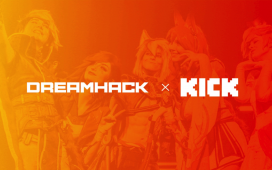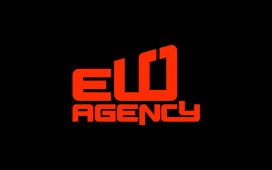Leading with a product placement partnership is likely to resonate far more with esports audiences than a heavy advertising approach, writes David Fenlon in this guest piece.
Persuading esports audiences to buy your product is a constant headache for advertisers and esports entities alike. Audience members tend to have a lot of disposable income but not much of this has been distributed to esports entities or brands advertising in this space.
There is strong evidence that esports audiences are willing to part with their cash, but this is very much on their terms through mechanisms such as donations. In contrast, creating demand through advertising is challenging, and many point to the extensive use of ad blockers in the community as evidence that this group will never be receptive to mainstream brands.
However, there is a golden opportunity for brands who are willing to rethink their advertising placement strategies. There have been examples of roaring successes for those who have taken a more considered approach rather than having their thinking shaped by types of advertising space that is easily available. Ultimately it comes down to relevancy, and this applies in both content and placement type.
Relevancy is key to all online advertising
The problems encountered by the esports industry are a microcosm of the issues encountered by all online advertising. The ubiquitous nature of online advertising often means that audiences are bombarded with adverts regardless of whether the content or the placement type is relevant to the audience member. Consequently, between 22 percent and 27 percent of all internet users in the US and the UK use ad blockers. The situation is far worse for advertisers in the esports industry, where 63 percent audiences use adblockers. The litany of complaints against online advertising can be seen in the table from eMarketer.com below:

The stats in the table above point to a lack of a balanced approach by marketers in general when using online advertising, but also highlights the subtle point that the advertising space itself is more of a problem than the content being presented. Whilst the first point on the list is evidently content-related, six of the top eight complaints are to do with the format in which the ads are delivered.
There are too many ads, they are in your face, and they appear to obstruct what the user wants to consume. The placement itself could make the advert irrelevant even if the content of it resonates with the audience. This is a crucial insight that is often overlooked when considering generating demand from a discerning esports audience: your advertising message doesn’t have a chance if your placement is all wrong.
Esports-centric platforms are not immune
This placement problem is platform agnostic. For instance, Twitch, the platform of choice for most esports viewers, is not immune to adblocking. In fact, there are two ways to do so: actively blocking ads via the Twitch platform, and hiding ads if you have Chrome, Firefox or Edge as your browser. Hiding ads is a potential disaster for advertisers as ads hidden by their audience are still charged for as a view by the ad platform.
Interestingly, Twitch’s revenue breakdown provides insights into how to balance out this ad format problem. Of the $1.54 billion (£1.18 billion) Twitch made in 2019, only $300 million (£229 million) was in advertising revenue. The rest was made from subscriptions and taking a share of subscriptions given to influencers. That more money is made “in-production” rather than from outside of production advertising provides a strong clue as to how to gain audience engagement. Clever product placement and interaction with those who are providing the content could provide the key to relevancy and unlocking this audience’s wallets.
Product placement and tapping into the lifestyle culture
It has been demonstrated in academic psychology studies that even in more traditional settings such as films on television, product placement can be up to twice as effective in brand recall as television commercials. This is because audiences are concentrating on the content for product placement whilst are often distracted or completely disinterested when television commercials occur.
This phenomenon is exaggerated in the esports space. Brands have significantly more exposure and flexibility through working with tournament organisers and event producers, allowing for completely unique activations which genuinely catch the attention of audiences. The format is far from saturated as not many groups have invested in this route yet. However, those that have leveraged product placement have made significant inroads into esports audiences.

Mercedes-Benz, Nike, and Redbull have all exhibited successful product placement strategies. Focusing on Mercedes’ partnership with ESL highlights the possibilities open to brand types that would initially struggle to be associated with competitive video gaming. The approach of the most valuable player (MVP) for ESL One tournaments (voted for by the fans) winning a Mercedes-Benz worth €50,000 ticks several “relevancy” boxes in fans’ minds because:
- Rewarding great play is a deeply-entrenched value of the esports community and resonates with the thriving donations culture in esports
- Asking fans to vote on the MVP allocation demonstrates a humility that is appreciated i.e. recognition that the fans are the experts, not Mercedes-Benz
- The product is high value i.e. worth winning, thus its presence at the event adds to the spectacle
The follow-up advertising by Mercedes-Benz of MVP winners driving its cars is instantly authentic in the eyes of the community as they directly reference contributions to the esport by Mercedes-Benz. Whilst it is too early to tell the overall impact of this approach, the early indicators are good. For instance, the Mercedes A-Class dethroned Volkswagon as the top leasing car in the UK – the average consumer being 25-34 and male. The contribution to this achievement by the esports campaigns of Mercedes-Benz is unclear; however, it is likely that esports audiences make up some of these consumers given the close alignment of the demographics.
Direct relationships are better than “one removed”
This is not to say that there is no place for pre-roll or banner advertising, but these tools are not best placed to lead engagement with an esports audience. Yet many brands edge towards this approach because of the advice given to them by their media agencies who are often only really set up to profit from transactional buying of these types of space. They can also have large gaps in their esports expertise. Thus, they often are not in a position to add value to a collaboration between an event organiser and a brand, and it is difficult for them to reliably make a significant margin in an area that is not their core offering.
Brands who own relationships with esports partners tend to fare much better. The offerings they can create with tournament organisers, publishers and producers cut-through the advertising noise and are much more relevant to audiences. They also avoid falling into the trap of their “test venture” into the industry translating into being heavy losers to the ad blocker game. Fortunately, there is still room for newcomers to the industry to adopt this direct relationship approach relatively cheaply, especially as competition is limited whilst COVID has impacted marketing budgets. However, this window of opportunity will likely close in the next 18 months, so brands need to strike up relationships with partners quickly.
David Fenlon is a commercial consultant who has advised dozens of global brands on key strategic budget decisions across various sectors. He specialises in the esports world and has worked with governments, endemics, and non-endemics on their esports strategies. His “Get in the Game” report captures the main body of his research into the esports sector, and is available on Esports Insider. David does not own shares in any of the companies referenced in this article nor has been paid to mention them.













